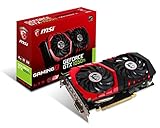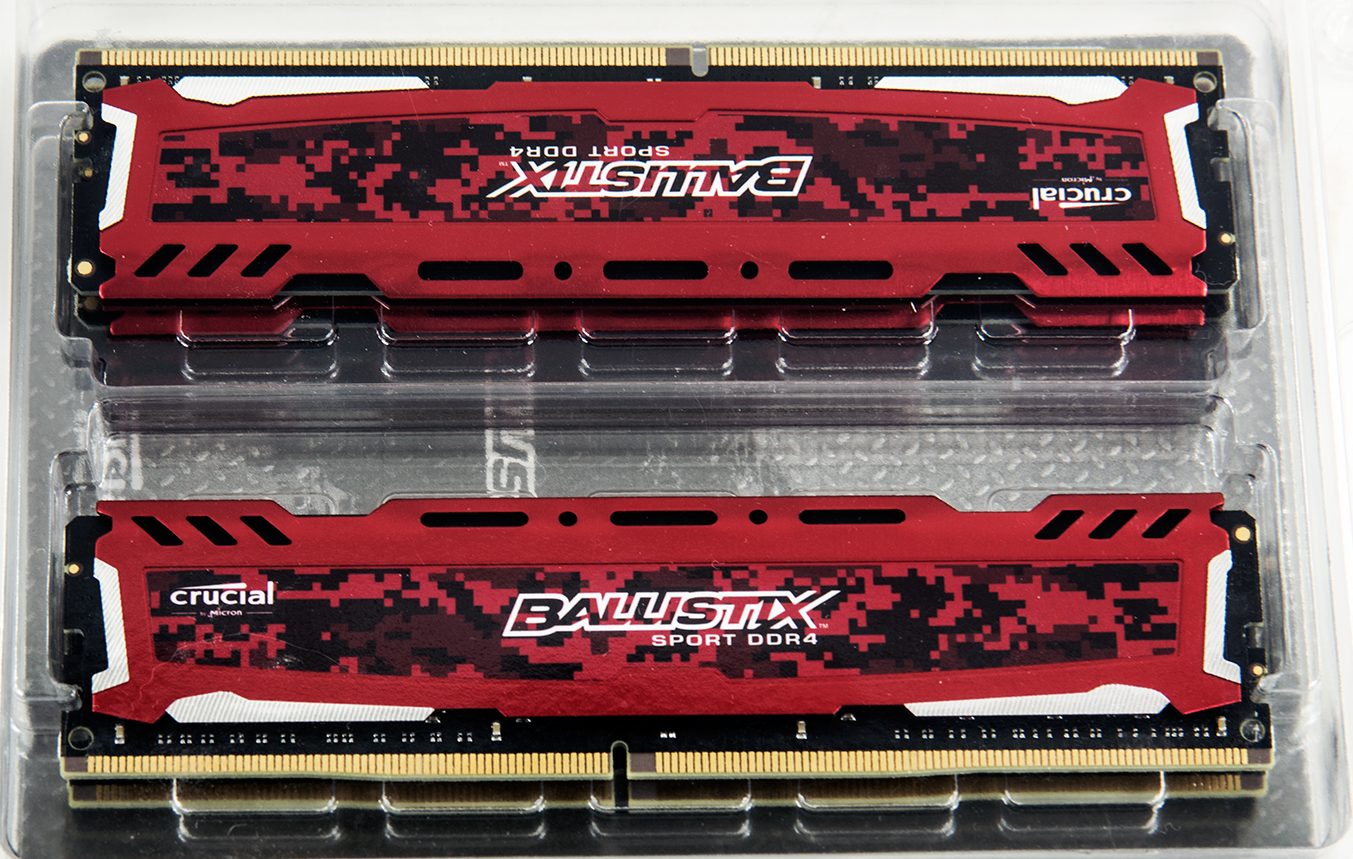 The first time we took the 980 Gaming 2 from its shipping container we honestly said “Oh crap, they must have sent a 970”. While that would have been a nice ‘bonus’ it would have thrown a monkey wrench into our 970 Krait review which needed a second 960 for the review!
The first time we took the 980 Gaming 2 from its shipping container we honestly said “Oh crap, they must have sent a 970”. While that would have been a nice ‘bonus’ it would have thrown a monkey wrench into our 970 Krait review which needed a second 960 for the review!
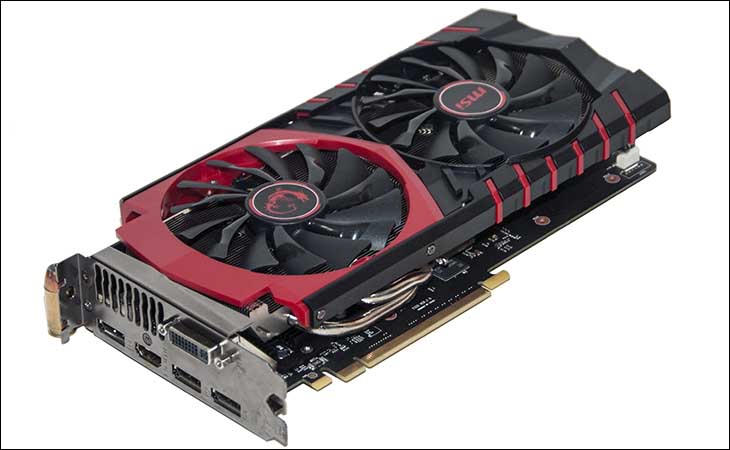 Luckily, once we turned it over and took a look at the model number we instantly understood what MSI has done. Firstly it is indeed a 960, but the GM-206 core and its IO ports are about the only things that it has in common with the typical GeForce GTX 960.
Luckily, once we turned it over and took a look at the model number we instantly understood what MSI has done. Firstly it is indeed a 960, but the GM-206 core and its IO ports are about the only things that it has in common with the typical GeForce GTX 960.
 Even compared to factory overclocked models like the PNY Elite OC, the MSI 960 Gaming 2 stands apart. Yes it is extremely eye catching – in an aggressive sort of way – but it stands apart not because of its aesthetics but because MSI was not afraid to think big. Usually 960s are all about putting as much power into as small a package as possible, but MSI has thought outside the box. Instead of reference length of about 9.5 inches and a width of 4.375, this beast from the east is 10.5-inches long and nearly 5.5-inches wide. To put this in perspective a MSI 970 Gaming 4G is about the same length and width. Now that is what we called a super-sized GeForce GTX960!
Even compared to factory overclocked models like the PNY Elite OC, the MSI 960 Gaming 2 stands apart. Yes it is extremely eye catching – in an aggressive sort of way – but it stands apart not because of its aesthetics but because MSI was not afraid to think big. Usually 960s are all about putting as much power into as small a package as possible, but MSI has thought outside the box. Instead of reference length of about 9.5 inches and a width of 4.375, this beast from the east is 10.5-inches long and nearly 5.5-inches wide. To put this in perspective a MSI 970 Gaming 4G is about the same length and width. Now that is what we called a super-sized GeForce GTX960!
 More importantly MSI has not wasted this room, and while the top plastic fascia does overhang the Twin Frozr V a smidge, it really is because MSI has given the rather cool running GM-206 core a rather massive custom heatsink and dual fan combination. Of couse this version of the Twin Frozr V is smaller than the one which accompanies their 980Ti Gaming 6, but you can see the 960 Gaming 2’s apple did not fall far from the tree so to speak. Put another way the MSI Gaming 2’s pedigree is rather impressive and obviously built with the overclocking enthusiast firmly in mind.
More importantly MSI has not wasted this room, and while the top plastic fascia does overhang the Twin Frozr V a smidge, it really is because MSI has given the rather cool running GM-206 core a rather massive custom heatsink and dual fan combination. Of couse this version of the Twin Frozr V is smaller than the one which accompanies their 980Ti Gaming 6, but you can see the 960 Gaming 2’s apple did not fall far from the tree so to speak. Put another way the MSI Gaming 2’s pedigree is rather impressive and obviously built with the overclocking enthusiast firmly in mind.
 Now with that being said there are key differences to the Gaming 2, but in the grand scheme of things this card is just as over-built as the 980Ti Gaming 6. This version of the Twin FROZR V uses five 8mm heatpipes – what MSI calls ‘SuperSU’ pipes – a massive aluminum fin array, two large fans and one smaller sub-heatsink for the other components. This is one less heatpipe than the TF V design used in the 980Ti Gaming 6, but just as with that card MSI has expanded the width of the heatsink so that when installed in a case it stands about 29mm taller than a reference video card.
Now with that being said there are key differences to the Gaming 2, but in the grand scheme of things this card is just as over-built as the 980Ti Gaming 6. This version of the Twin FROZR V uses five 8mm heatpipes – what MSI calls ‘SuperSU’ pipes – a massive aluminum fin array, two large fans and one smaller sub-heatsink for the other components. This is one less heatpipe than the TF V design used in the 980Ti Gaming 6, but just as with that card MSI has expanded the width of the heatsink so that when installed in a case it stands about 29mm taller than a reference video card.
 As with the 980Ti this not only allows the Gaming 2’s heatsink to be larger than its dimensions would lead you to believe – yes it is even bigger than you think – it allows MSI to use two of their massive Torx fans. Of course this in conjunction with the super-sized dimensions means a 960 Gaming 2 will simply not fit in smaller cases that a typical GeForce 960 can fit, but this issue is more than made up for in other areas.
As with the 980Ti this not only allows the Gaming 2’s heatsink to be larger than its dimensions would lead you to believe – yes it is even bigger than you think – it allows MSI to use two of their massive Torx fans. Of course this in conjunction with the super-sized dimensions means a 960 Gaming 2 will simply not fit in smaller cases that a typical GeForce 960 can fit, but this issue is more than made up for in other areas.
 Also like the Gaming 6 980Ti those two large Torx fans are independently controlled to minimize the noise the card makes, and when the card is idle they actually stop. On the surface this may not sound as impressive as 980Ti Gaming 6 being able to do the same thing, but this card is not a stock 960 and has been factory overclocked. That means that it pumps out more heat than usual – even when idling. In fact even PNY’s Elite OC custom heatsink design can’t passively cool an overclocked GM-206 and yet MSI has been able to do precisely that. To us that makes the extra area it requires a more than fair trade-off.
Also like the Gaming 6 980Ti those two large Torx fans are independently controlled to minimize the noise the card makes, and when the card is idle they actually stop. On the surface this may not sound as impressive as 980Ti Gaming 6 being able to do the same thing, but this card is not a stock 960 and has been factory overclocked. That means that it pumps out more heat than usual – even when idling. In fact even PNY’s Elite OC custom heatsink design can’t passively cool an overclocked GM-206 and yet MSI has been able to do precisely that. To us that makes the extra area it requires a more than fair trade-off.
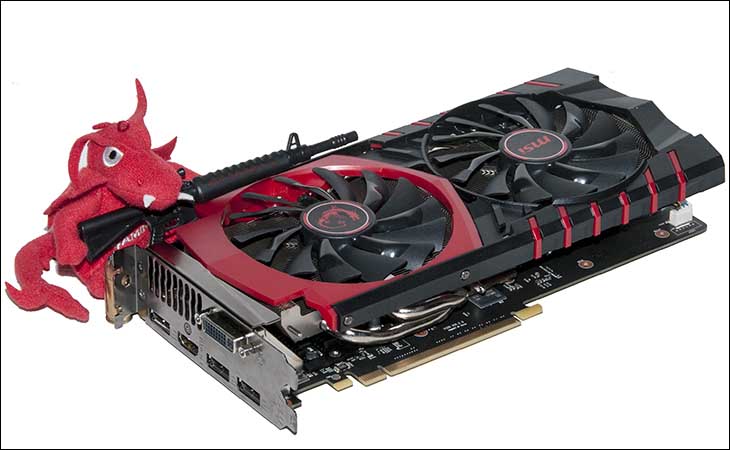 Interestingly enough MSI has not overclocked the MSI 960 Gaming 2 as much as PNY has done. Do not get the wrong idea, as taking – and guaranteeing a – GM-206 to 1216 / 1279 is still a 8.6 percent overclock from the reference levels and that is still darn impressive. It just is that PNY has gone even further. This is not because MSI feels their card is ‘inferior’, rather this is simply a difference in philosophies. The Elite OC from PNY is meant for consumers who want a plug and play overclocked 960… and are willing to pay a premium for it. The MSI Gaming 2 is meant for enthusiasts who actively enjoy pushing the envelope…and also like getting a deal. After all, by ‘merely’ factory overclocking by 8.6% instead of 16 percent, MSI has been able to reduce the price by basically 7%; and that allows this factory overclocked 960 to come within a hairs breadth of what reference / stock models sell for.
Interestingly enough MSI has not overclocked the MSI 960 Gaming 2 as much as PNY has done. Do not get the wrong idea, as taking – and guaranteeing a – GM-206 to 1216 / 1279 is still a 8.6 percent overclock from the reference levels and that is still darn impressive. It just is that PNY has gone even further. This is not because MSI feels their card is ‘inferior’, rather this is simply a difference in philosophies. The Elite OC from PNY is meant for consumers who want a plug and play overclocked 960… and are willing to pay a premium for it. The MSI Gaming 2 is meant for enthusiasts who actively enjoy pushing the envelope…and also like getting a deal. After all, by ‘merely’ factory overclocking by 8.6% instead of 16 percent, MSI has been able to reduce the price by basically 7%; and that allows this factory overclocked 960 to come within a hairs breadth of what reference / stock models sell for.
 Sadly, MSI did not take the opportunity to overclock the memory and instead the Gaming 2’s 2GB of GDDR5 memory is set to a stock level of an effective 7010MHz – or the same as what PNY does. We say ‘sadly’ as this is a missed opportunity for MSI and even a 50Mhz(effective) would have made the Gaming 2 even more alluring to consumers. Of course, MSI expects you to quickly rectify this situation, but if you are the type to leave things well enough alone this is one area you will find the Gaming 2 a touch less than optimal.
Sadly, MSI did not take the opportunity to overclock the memory and instead the Gaming 2’s 2GB of GDDR5 memory is set to a stock level of an effective 7010MHz – or the same as what PNY does. We say ‘sadly’ as this is a missed opportunity for MSI and even a 50Mhz(effective) would have made the Gaming 2 even more alluring to consumers. Of course, MSI expects you to quickly rectify this situation, but if you are the type to leave things well enough alone this is one area you will find the Gaming 2 a touch less than optimal.
 By removing that impressively large heatinsk and dual fan combination we can see that MSI has not overlooked the rest of the key components. To be MSI has included a single heatsink underneath the main heatsink. This will help ensure that the key voltage regulator components are also able to stay cool when there is little airflow. Once again this is overkill, but certainly nice to see nevertheless!
By removing that impressively large heatinsk and dual fan combination we can see that MSI has not overlooked the rest of the key components. To be MSI has included a single heatsink underneath the main heatsink. This will help ensure that the key voltage regulator components are also able to stay cool when there is little airflow. Once again this is overkill, but certainly nice to see nevertheless!
 On the power delivery end of things MSI has opted to upgrade to a ‘military grade’ power delivery system that uses 4 phases. Just as with the custom Twin FROZR V heatsink, this robust subsystem will help ensure you are able to overclock your Gaming 2 even further.
On the power delivery end of things MSI has opted to upgrade to a ‘military grade’ power delivery system that uses 4 phases. Just as with the custom Twin FROZR V heatsink, this robust subsystem will help ensure you are able to overclock your Gaming 2 even further.
 To do just that MSI has opted to forgoe the single 6-pin connector and instead has gone for a single 8-pin. This too is overkill, but really does make for one heck of a first impression!
To do just that MSI has opted to forgoe the single 6-pin connector and instead has gone for a single 8-pin. This too is overkill, but really does make for one heck of a first impression!
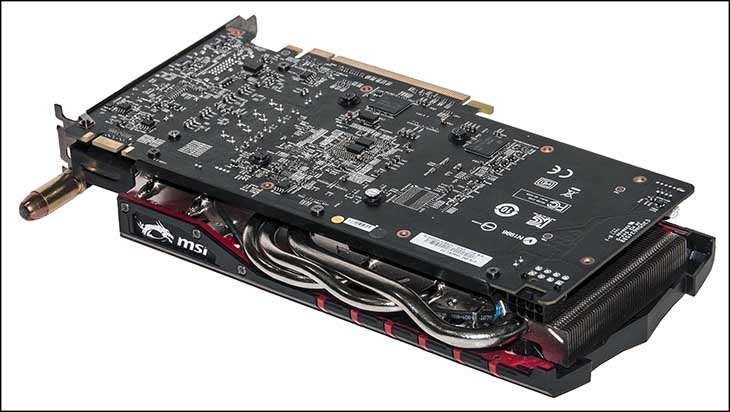 Unfortunately, the backplate found on the higher end models is missing from the Gaming 2 card. This is not a deal-breaker and given the price of this card it is an acceptable compromise…even if it does give an odd overall look to the card.
Unfortunately, the backplate found on the higher end models is missing from the Gaming 2 card. This is not a deal-breaker and given the price of this card it is an acceptable compromise…even if it does give an odd overall look to the card.
As mentioned previously, the input selection of the MSI 960 Gaming 2 GTX is reference through and through. On the bottom row you get to three full size DisplayPorts, and a single full size HDMI port; while the top row is split nearly evenly between exhaust slits and a single DVI port. Overall it is a very nice selection that should satisfy most consumer’s needs nicely.


